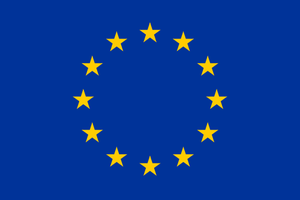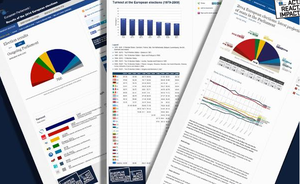Lack of consistency generates lack of transparency in EU elections
Over the next three days, the second largest democratic exercise this year (after the Indian elections) is taking place throughout Europe, as citizens of the 28 member states of the EU go to the polls and vote for their respective Members of the European Parliament (MEPs). Traditionally, the European Parliament has had only little impact on the EU’s decision-making process, but its powers — and with it the importance of the European elections — have slowly increased over the past few decades as the body has evolved from merely a consultative assembly to a more powerful legislature. The 2014 elections mark yet another shift in the importance of the European Parliament: for the first time, MEPs will elect the leader of the EU’s executive body, the European Commission President.

Despite its growing powers, though, the European Parliament (EP) has done little in the past to create transparency around the financing of the elections. The process is completely disjointed across the EU countries, making it rather impossible to find and compare records for political contributions or election spending. Couple the scattered rules at the national level with little accountability at the European level and now you have the world’s largest economy setting a poor example for political finance disclosure and oversight to 28 member countries.
Currently, the election of MEPs is guided by the relevant rules of each individual member state. Under this structure, most (if not all) aspects of the election vary from country to country, from limits on campaign spending, to types of legal contributions, to disclosure of spending and political donors. Even the campaign period for MEPs isn’t consistent; candidates in member countries such as Poland or Lithuania can begin promoting their political agenda as soon as elections are announced. Others can only conduct political activities for a specific duration (for example, Romanian candidates can only campaign for the 30 days leading up to the election).
With 28 different election laws regulating the same process, it is very difficult to tell or to compare how national parties are funding their EP campaigns, in turn making it nearly impossible to hold participating candidates and the political forces behind them to account.
Some countries, such as the EU’s newest member, Croatia, require all political parties and candidates to disclose all donors’ identities and specific contribution dates for both in-kind and cash donations. But this doesn’t indicate a norm across EU countries: Regulation on contribution disclosure runs the gamut. Most countries regulate campaign contributions in a fashion similar to Austria, where parties disclose donors who have given over a particular threshold (in Austria, that threshold is 3,500 euros per calendar year). A few member states, including Cyprus and Malta, don’t require parties to include information on their donors at all. When examining the scattered disclosure regulation and then taking into account the fact that several countries allow foreign interests to contribute to candidates and parties (Belgium, Germany and Italy to name a few), the possibilities for foul play and for interests to influence elections across Europe undetected seem endless.
To make things even more complicated, Europarties, AKA the 13 transnational political groups made up of national parties, are only required to report their spending and income annually. Most campaigning for European elections is still conducted at the national level, but Europarties increasingly participate in campaign activities, receive private donations and EU grants while subject to only little regulation on their organization and activities. Only just recently has the Committee on Constitutional Affairs even proposed a definition for what a Europarty is and what a “donation” to a Europarty entails.
Disclosure on the EU level is also significantly delayed: The latest party revenues and expenditures (available only in PDF formats) are from 2012. The lag time in publishing reports plus the varying requirements on reporting timelines across member states means that citizens and watchdog groups monitoring the EU institutions won’t be able to assess major influence factors in the 2014 election until at least a year from now.

The EU has shown an increased commitment to transparency in recent years. The institution has embraced the potential for open data within elections with initiatives such as releasing 2014 election data in an open format, but it continues to do little to provide transparency about the influence machine behind the elections. Fortunately, a promising development may enable better EU elections oversight: Latest rules for European level parties that will be in effect by 2017 (in time for the next parliamentary elections in 2019) have introduced an independent monitoring authority to review the financing of European level political parties.
For more on the 2014 election, Kohovolit.eu has launched a tool that allows you to compare your views to the voting record of MEPs and TI-European Union is publishing updates about its integrity and transparency. The Group of States against corruptions report also evaluates general transparency of party funding in each EU member state.

